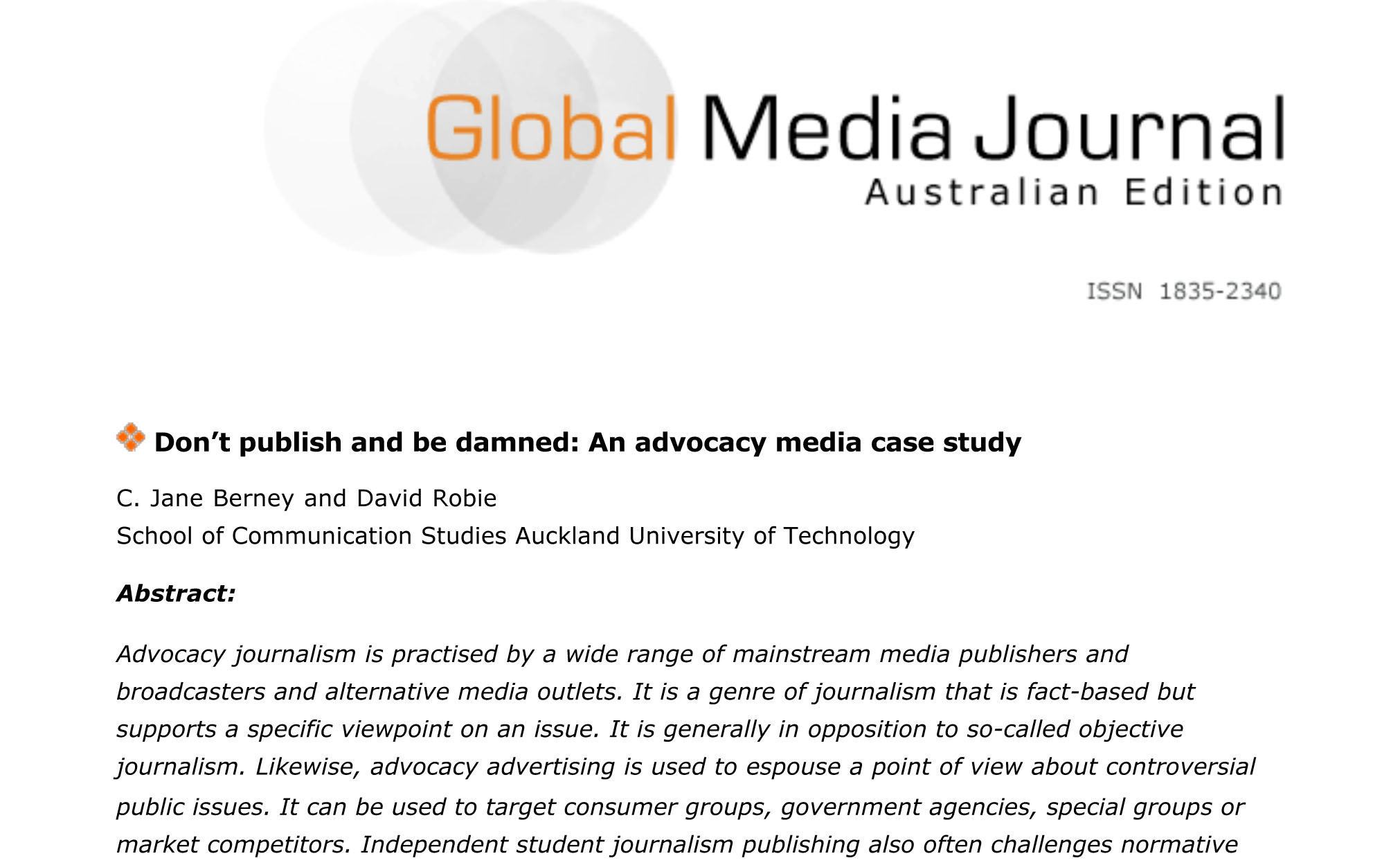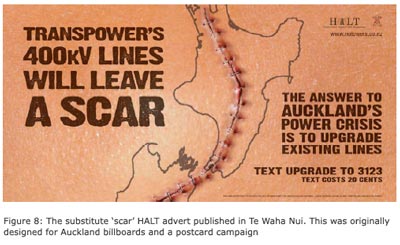
Advocacy journalism is practised by a wide range of mainstream media publishers and broadcasters and alternative media outlets. It is a genre of journalism that is fact-based but supports a specific viewpoint on an issue. It is generally in opposition to so-called objective journalism.
Likewise, advocacy advertising is used to espouse a point of view about controversial public issues. It can be used to target consumer groups, government agencies, special groups or market competitors.
 Independent student journalism publishing also often challenges normative values. Advocacy advertising, or social issues marketing, was the brief for five shortlisted groups of Auckland University of Technology advertising creativity students on behalf of a New Zealand lobby and protest movement called Homeowners Against Line Trespassers (HALT) in September 2006.
Independent student journalism publishing also often challenges normative values. Advocacy advertising, or social issues marketing, was the brief for five shortlisted groups of Auckland University of Technology advertising creativity students on behalf of a New Zealand lobby and protest movement called Homeowners Against Line Trespassers (HALT) in September 2006.
HALT was campaigning against a controversial proposal by the state-owned enterprise Transpower to build a 400kV transmission line across a 200km route from Otahuhu to Whakamaru in the Waikato as part of a new national pylons network. Three campaign advertisements were created by a pair of students for AUT’s journalism training newspaper, Te Waha Nui, and a separate single advertisement was designed by a second pair of students for an Auckland metropolitan billboard and postcard campaign.
This article examines advocacy media in the context of the HALT campaign that explored research links between power pylons and public health and the dynamic with student editors that led to non-publication of the professionally selected social issues message.
Berney, C. Jane, and Robie, David (2008). Don't publish and be damned: An advocacy media case study. Global Media Journal [online], 1(1) Availability: @ GMJ Online:
http://www.commarts.uws.edu.au/gmjau/iss1_2008/bernie_robie.html


